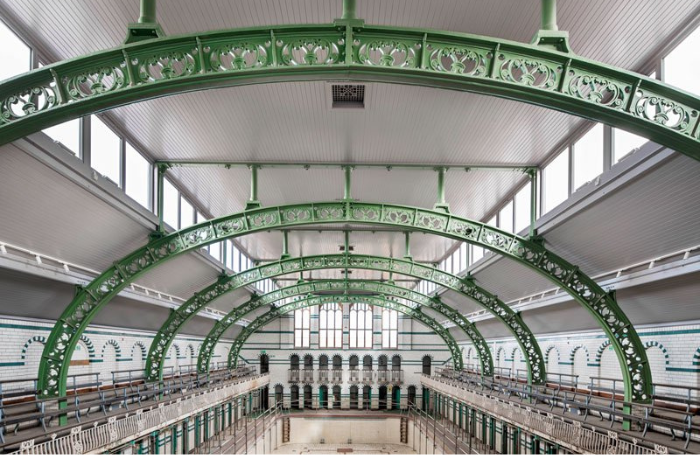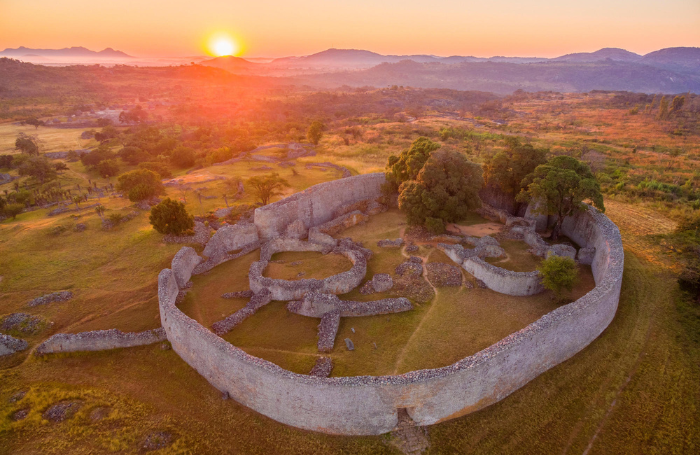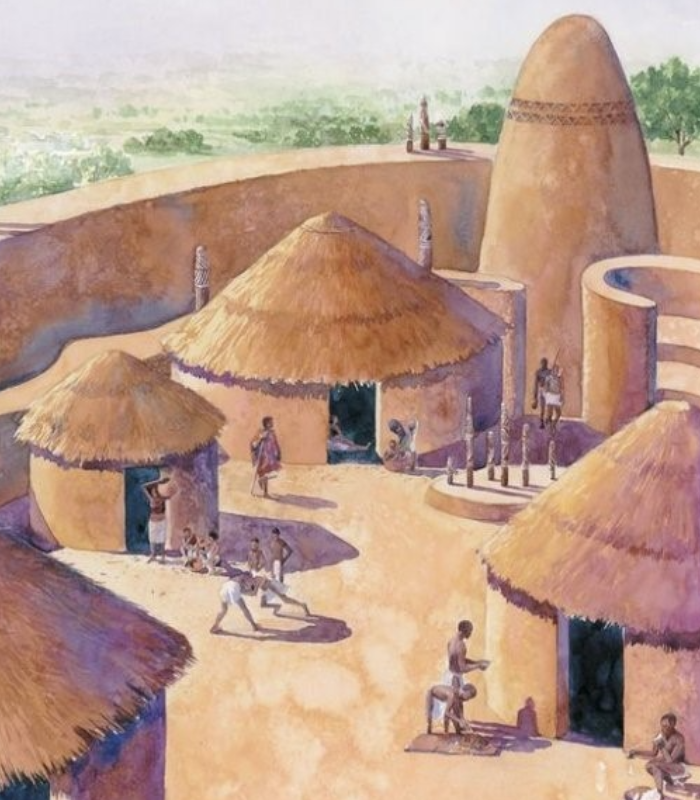I have a passion for heritage architecture as a window into past, present, and future civilisations. While I have worked on a diverse array of projects - both historic and new - one that holds a special place in my heart is the restoration of the Moseley Road Baths, an iconic Birmingham site steeped in a wealth of history.
Built in 1907, the Moseley Road Baths was put on the Heritage at Risk Register in 2005. Restoring the building to its former glory involved the meticulous restoration of the only surviving slipper baths in the country, which were used for individual bathing in an era when many homes did not have bathrooms.
These feature three separate entrances, for women, men's first class and men's second class. As I reflect on this project, I am immensely proud to be a part of an inclusive intervention that considers race, gender and religion, and embraces the vibrant diversity of the Moseley Road community in Birmingham. This inclusive approach ensures that the heritage of this remarkable site is accessible and appreciated by all.

Heritage architecture, for me, is not just about preserving the narrative of our past but also about shaping a more inclusive and honest future.
This Black History Month, I want to celebrate another striking example of heritage architecture – the Great Zimbabwe.
Great Zimbabwe
Zimbabwe – a term that echoes through the annals of history, shrouded in mystery and awe.
But what does it mean? Zimbabwe, in its indigenous Shona language, ‘Dzimba dza mabwe’, translates to ‘houses of stone’ or ‘stone buildings’. This name is befitting of a land dotted with breathtaking stone ruins, standing as enduring witnesses to a civilisation that thrived long before the colonial era.
The ruins scattered throughout the country are a testament to a glorious and sophisticated past. Among these magnificent structures, the Great Zimbabwe, a UNESCO World Heritage Site, takes centre stage. Nestled in South-Eastern Zimbabwe, this archaeological marvel blankets an impressive 200 acres of land, making it the largest of over 150 significant stone ruins scattered across Zimbabwe and Mozambique.

The magnificent structures
At its zenith, from the 11th to 15th centuries, the Great Zimbabwe was home to a thriving Shona population, estimated at 10,000 to 20,000 people. These stone structures, boasting walls reaching up to 11 meters in height, are a testament to the advanced dry-stone masonry skills of the builders.
These structures were constructed without the use of mortar, highlighting the advanced engineering skills of the time. The economy thrived on cattle husbandry, crop cultivation, and the trade of gold, establishing Great Zimbabwe as the heart of a prosperous trading empire.
Within the embrace of these stone walls, thriving communities forged their existence, and their way of life left an indelible mark on the architecture we see today. The Great Zimbabwe, as the heart of a bustling trading empire, was not just a place of shelter - it was a reflection of the strength and unity of the people who inhabited it. The ruins still standing today symbolise the enduring human spirit and the unwavering resolve to build and prosper.
It's essential to recognise that Zimbabwe boasts several historical sites with similar structural and historical significance. Khami and Shangani are two significant archaeological sites located in Matabeleland, Zimbabwe. These ruins offer valuable insights into the Vivrabt historic tradition and cultural heritage of the region.
Khami is also a UNESCO World Heritage Site and was once the capital of the Kingdom of Butua during the 15th and 17th centuries. The ruins of Khami comprise stone walls, terraces, and platforms that showcase the architectural prowess of the kingdom's inhabitants. Exploring Khami allows visitors to appreciate the urban planning and social organisation that characterised the kingdom's civilisation.
The Shangani Ruins, located approximately 30 kilometres southwest of Bulawayo, provide a glimpse into the pre-colonial history of the region. Believed to have been built during the 19th century, the Shangani Ruins consist of stone walls and enclosures that served as defensive structures. These remnants reflect the turbulent history and conflicts between different ethnic groups in the area during that period.

Reflecting on my experiences working on heritage buildings in Birmingham, I've witnessed how these structures have been meticulously preserved over time. They tell stories of generations past, and in their well-preserved state, they evoke a sense of history and continuity.
It's in these moments that I find myself contemplating the potential that The Great Walls of Zimbabwe could have harnessed if similar preservation efforts and care had been taken.
The juxtaposition of Birmingham’s well-maintained heritage buildings and the ruin of Great Zimbabwe reminds us of the importance of preserving architectural and cultural treasures, ensuring they continue to inspire and educate generations to come.
Racism and misconceptions
Yet, as we delve into the history of these ruins, we must confront the racism and prejudice imposed by early explorers and archaeologists. British explorer and archaeologist James Theodore Bent embarked on a journey of discovery in the late 19th century.
Despite his monumental excavations at the Great Zimbabwe, he faced scepticism and disbelief. Some struggled to reconcile the notion that Black Africans could design and construct such sophisticated structures. This prejudiced perspective not only belittled the achievements of indigenous Zimbabweans but also hindered the recognition and appreciation of their architectural prowess.
Lessons from indigenous architecture
Cultural significance: These stone structures are not mere relics - they are the roots of our cultural identity. Preserving and celebrating our cultural heritage enriches our lives and connects us to our roots.
Sustainability: The dry-stone masonry techniques of these structures, passed down through generations, have proven to be environmentally friendly and durable over centuries and should serve as a source of inspiration for modern sustainable building practices.
Community: The ruins remind us of the power of unity and community engagement - they were a communal effort. In contemporary practice, community engagement in architectural projects leads to more inclusive and meaningful designs.
Resilience: These ruins have withstood the test of time, a testament to human resilience. Preserving them emphasises the importance of building structures that can endure.
Innovation: The ingenuity displayed in the construction of these structures challenges stereotypes and proves that innovation knows no boundaries. We must continue to promote diversity in architecture and encourage new ideas from all backgrounds.
Preserving African architectural heritage
As we celebrate Black History Month, we must recognise the lost heritage of indigenous Zimbabweans, who were pioneers in architecture, engineering, and culture. These ruins stand not just as architectural wonders but as a reflection of the civilisation that gave birth to them. They are the embodiment of our lost heritage, bridging the gap between the past and the present.
Now, we must pose a critical question: Should we, as a global community, unite to preserve and protect African architectural heritage?
It’s not just preserving stones and structures - it is a matter of safeguarding our shared history and celebrating the diversity of human achievement. It's a call to ensure that the soul of African civilisation, as exemplified by the Zimbabwean stone ruins, continues to inspire and enrich the world for generations to come.
The ruins located across Zimbabwe provide a captivating experience for history enthusiasts and cultural explorers. These ruins offer an opportunity to delve into the past, witness remarkable architectural achievements, and gain a deeper understanding of the ancient civilisations that once thrived in Zimbabwe.
About the author
Lechelle Ndlovu is a Part II Architectural Assistant at Donald Insall Associates, Chartered Architects and Historic Building Consultants. She has a profound passion for architectural conservation, focused on preserving heritage buildings, as they tell a story of past, present, and future.

Beyond her professional role, Lechelle enjoys researching, particularly in the realm of African architecture. She embarks on journeys to explore Africa's architectural treasures, delving into their captivating narratives and enduring traditions.
Lechelle also has a keen interest in diverse storytelling techniques and methods and telling stories of people whose stories are overlooked.









